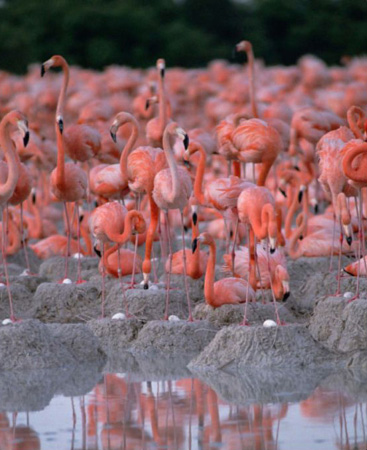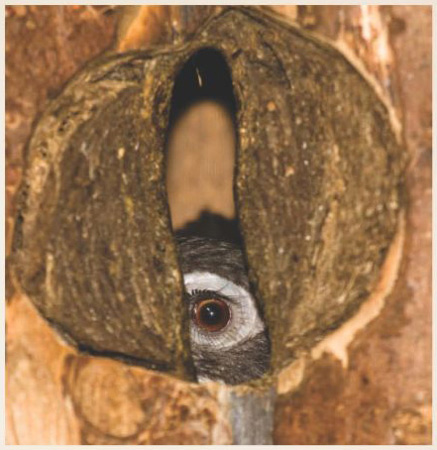Bird Nests, From Tract Housing to Skyscrapers
-
Photograph by Fotolia via Princeton University Press.
Minimalist Apartment
Most birds like a soft nest lined with grass. Not the song thrush. As the Spartans of the bird world, they prefer cup nests of grass, moss, mud, and rotten wood without any excess lining.
-
Photograph by iStockphoto via Princeton University Press.
Grand Skyscrapers
Of all bird species, the stork would feel most at home in Dubai. Frequently building on top of man-made structures, storks construct extravagant nests for themselves, going higher and higher each year as they add to their sprawling platforms.
-
Photograph by Duncan Noakes/Fotolia via Princeton University Press.
Crafty Treehouse
Although birds know how to weave innately, they get better with practice, explains Peter Goodfellow, author of Avian Architecture: How Birds Design, Engineer and Build. And although they don’t show signs of humanlike covetousness, they do tend to distinguish themselves by employing different types of stitches and knots, suited to their eggs and surroundings. Here, a weaver bird shows off some fanciful threading skills.
-
Photograph by Johan Swanepoel/Fotolia via Princeton University Press.
Design Studio
African Masked Weavers display some of the more intricate nest-building techniques. “It’s amazing how a small bird can construct these nests using only its beak,” Goodfellow says, explaining his fascination with nests.
-
Photograph by Terry Wilson/iStockphoto via Princeton University Press.
Luxury Pad
Hummingbirds frequently incorporate silk, taken from spiderwebs and cocoons, into their nests.
-
Photograph by Missing35MM/iStockphoto via Princeton University Press.
Vintage Dwelling
Burrowing owls appreciate vintage design. Rather than build their own homes, they repurpose old prairie dog nests.
-
Courtesy Princeton University Press.
Monochromatic Palace
Bowerbirds’ prospects of finding a mate depend in large part on their decorating abilities. Different types of bowerbirds prefer different color schemes. The satin bowerbird, pictured here, is into blue—the shinier and bolder the better. The males draw in their ladies with pieces of glass, snail shells, bottle caps, and other bright-blue objects. They may also paint the inside blue with a mixture of charcoal and berries.
-
Photograph by Feng Yu/Fotolia via Princeton University Press.
Mud Home
Only around 5 percent of species use mud to build their nests. It’s this little group, however, that inspired people to create homes of clay, according to Pliny the Elder’s Natural History (circa 77-79 CE). Here, two barn swallows sit atop a mud nest that incorporates moss, hair, and feathers.
-
Photograph by Diane Stamatelatos/Fotolia via Princeton University Press.
Polygamist Warehouse
Male ostriches generally form a harem with three hens. All the eggs are then laid in a single pitlike scrape. Up to 50 eggs have been recorded in a single nest, but on average only one chick survives to adulthood. The male generally helps out his ladies with the incubating responsibilities, taking a shift at night.
-
 Photograph Courtesy Princeton University Press.
Photograph Courtesy Princeton University Press.Tract-Housing Complex
American flamingoes tend to lay their eggs in identical mound nests constructed close to one another. These colonies, constructed over several days of sporadic work, sometimes involve thousands of birds.
-
 Photograph courtesy Princeton University Press.
Photograph courtesy Princeton University Press.Reclusive Hangout
Female great hornbills like privacy while tending to their young. They search for large hollow spaces in trees and then customize the door, sealing themselves in with their own fecal matter. After her home is built, the female drops her wings and tail feathers, relying on the male to pass food through the door through the entire period of incubation and child rearing. By the time her babies are almost grown, her feathers have returned, and she’s ready to leave the nest.